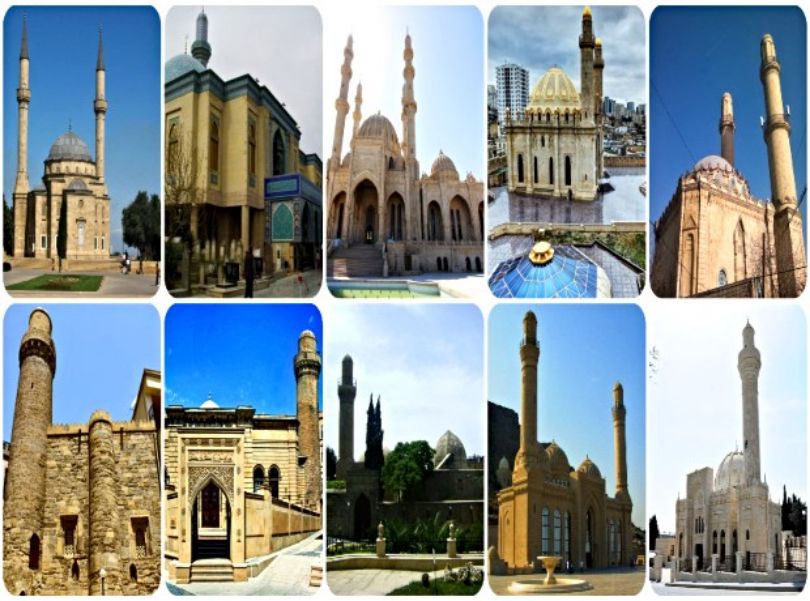The mosque is an architectural structure built for worshiping God, which emerged with the arrival of Islam. The mosque represents the place of prayer. It is built in the style of a domed and minaret building in a special area. In many cases, it has an inner courtyard. Islam in Azerbaijan - After the conquest of Azerbaijan (Caucasian Albania and Atropatena) by the Arabs in the 7th century, Islam gradually began to spread here. There are 2166 mosques in the Republic of Azerbaijan (excluding the Nakhchivan Autonomous Republic and the occupied regions). It is said that there are around 120 mosques even in Baku alone.All these interesting and beautiful old and modern mosques affect the tourists who come to our city with their historical and architectural structures. But there are 10 among them, you should definitely see ! Here are the 10 mosques we chose for you!
1 Muhammad Mosque or Siniggala Mosque
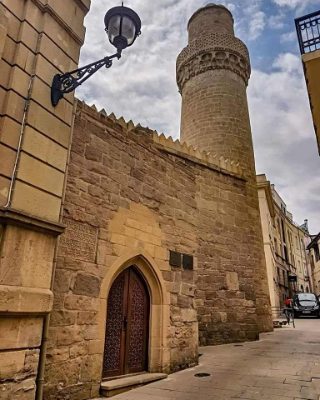
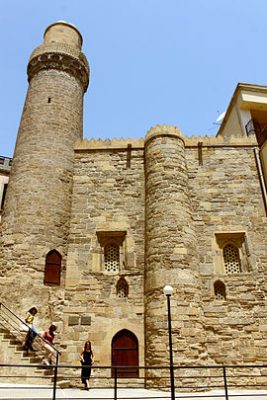
Muhammad Mosque or Siniggala Mosque is the mosque built in the 11th century in Old City, Baku, Azerbaijan. The mosque is also known as Siniggala, for the name of its minaret – Siniggala (“damaged tower”). The mosque acquired its second name in 1723, when military squadron of Russian Army, consisting of 15 warships and led by Admiral Matyushkin, approached the city from seaside and demanded its surrender during the Russo-Persian War (1722-1723). Russian warships began to bomb the city after the refusal to surrender. One of the Russian shells hit the minaret of Muhammad Mosque and damaged it. A stormy wind then blew the Russian ships further out to sea. The population of the city interpreted the wind as a divine scourge sent to the occupants. From that time until the middle of the 19th century, the minaret of the mosque wasn’t reconstructed. It remained a symbol of the persistence and courage of the defendants of the tower. It is the first building in Azerbaijan, which is related to Islam and dated for its architectural ligature
Architecture According to Arabic inscription which was saved in front of doorway of northern wall of the mosque, it was built by ustad-rais Muhammad the son of Abu Bakr in 471 of Hijra (1078/79). It means that the architect was not only a master-ustad, but also a rais-head of artificers’ corporation. Minaret Minaret adjoins new mosque, which was constructed on the basis of the older one’s plan. Trunk of the minaret is strong and slightly thinning. It is constructed from carefully drafted stone. Coarse and flat stalactites of tabling retain sherefe – muezzin’s balcony enclosed by stone plates. A ribbed dome completes the trunk of minaret. Narrow winding stairs are winded within the trunk. Ligature with Koranic inscription was traced under the tabling with archaic kufi alphabet.
2 Palatial mosque
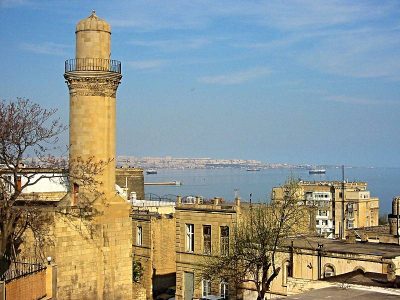
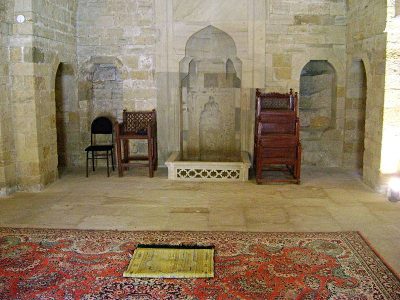
Palatial mosque in Baku - is a mosque of the 15th century, which is included in Shirvanshah's palace complex in Baku – Tekrardir bashga adla bu mescidden var Architecture The plan of the mosque is rectangular. There is a small hall, small prayer room for women, and serving rooms. The northern portal, turned towards a burial vault of Shirvanshahs, is more solemn than the eastern one. The latter, which came down to an underground exit, was intended for the inhabitants of the palace. Interior Two tier windowed prayer room is covered with cupola with spherical sails. Mihrab is located in the southern end of the palace. Cupola area over one a tier women prayer room ceding to cupola of the hall with its dimensions and replacing its outlines. Aperture of the mosque’s portal is clearly described on severe background of prismatic volume, ended with two cupolas with slightly sharpening calottes. Minaret Trunk of the minaret is surrounded by an inscription, a ligature of which has a date of 845 (1441/42). Details of sherefe’s stalactites are subtly modeled.
3 Juma Mosque
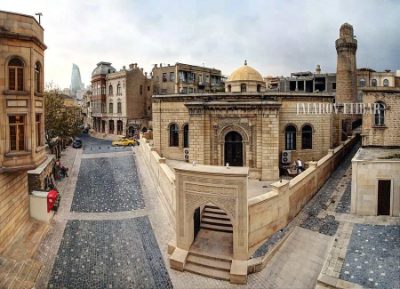
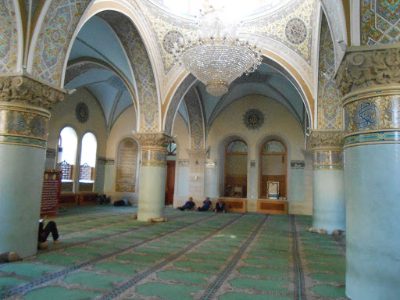
Juma Mosque , or Friday Mosque, is a mosque in Baku, Azerbaijan. The Cathedral Mosque was built in the 12th century on the site of a temple of fire-worshipers. There is an inscription on the mosque emphasize that “Amir Sharaf al-Din Mahmud ordered to restore this mosque in the month of Rajab 709 A.H. (1309)”. On the northern wall of the mosque a minaret was erected which had been surrounded by stalactites in the year of 1437. Located in the historic Icheri Sheher, the mosque has been rebuilt several times. The present Friday Mosque was built in 1899 under the financing of Baku philanthropist merchant Haji Shikhlali Dadashov. There are traces of a Zoroastrian temple at the site. In the cultural life of the medieval Azerbaijan the cathedral mosque served as socio-cultural centers
History Jame Mosque Jame Mosque was built in the 12th century. A sophisticated design of the Mosque shows that it was built in several stages. Its main parts are a worship hall in the southern part and minarets in the north. There are small yards between the worship hall and the minarets. The most ancient part of the mosque is a square-shaped worship room. The room resembles kiosk mosques of the Seljuk period. Its cover was archaic. According to its exterior, this dome was constructed in style of the Maragha-Nakhchivan architectural school, which operated in the 12th century. The ornamental motifs covering the upper part of the dome is found in Seljuk period architectural monuments such as minarets of Shamkir, Garabagh and Atabeklar complex, Maragha Red Gumbez (Dome) Tomb, etc. Some scientists, in particular, Andrey Pavlinov, believed that the Juma Mosque was built on the remains of a temple of fire-worshipers. Minaret In 1437, on the northern wall of the mosque, the stalactite-shaped minaret was built to call out the worshipers to namaz. On the inscription found in the archeological excavations of the minaret, the text of Mohammed Olcaytun's mourning, head of the Elkhanians, has been engraved. Operating as a Madrasa The rooms of the Jame Mosque were built in the 15th century for educational purposes in the yard of the Mosque. In the nineteenth century, the cells of the Mosque were destroyed due to expansion of A. Zeynalli Street and road construction and just one of them remained in order to be used as a mosque madrassa. Construction of the Juma Mosque Juma Mosque was constructed in the remains of the Jame Mosque by Baku millionaire and philanthropist Haji Sheikhali Agha Dadashov in 1899. The mosque operated as a carpet museum in the Soviet period. The Juma Mosque, which restored its activities as a mosque in the 1990s, was fundamentally repaired at the expense of the state budget. The square-shaped worship hall with 4 columns in the central part of the Mosque and small dome are the main components of the Mosque. Oriental and European classic motifs have been used in the building's architecture. The portal introduces the basic principles of Azerbaijani architecture: stone carvings, national patterns, artistic epigraphs, etc. In 2008, by the construction specialists, architects and artists, the mosque was completely restored, heating and lighting systems were installed. On the walls of the mosque, hand-made ornaments, surah from Quran have been engraved and the names of the five members of the Ahl al-Bayt, who are sacred in Islam, were written. interred here by Sheikh Sharif Sheikh Bin Abid, who died the next day after work.
4 Bibi-Heybat Mosque
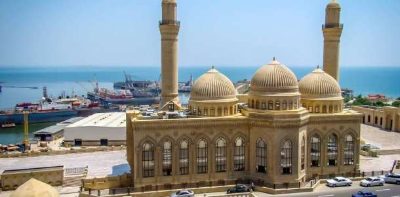
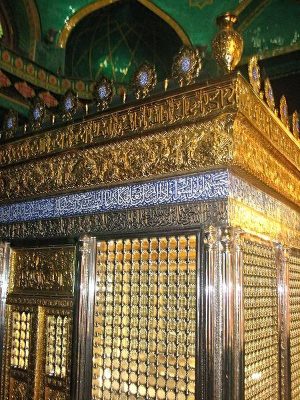
Bibi-Heybat Mosque is a historical mosque in Baku, Azerbaijan. The existing structure, built in the 1990s, is a recreation of the mosque with the same name built in the 13th century by Shirvanshah Farrukhzad II Ibn Ahsitan II, which was completely destroyed by the Bolsheviks in 1936. The Bibi-Heybat Mosque includes the tomb of Ukeyma Khanum (a descendant of Muhammad), and today is the spiritual center for the Muslims of the region and one of the major monuments of Islamic architecture in Azerbaijan. It is locally known as "the mosque of Fatima", which is what Alexandre Dumas called it when he described the mosque during his visit in the 1840s.
History The mosque was built over the tomb of the daughter of the seventh Shiite Imam - Musa al-Kazim, who fled to Baku from persecution of caliphs. On the tomb there is carved on a stone inscription indicating that Ukeyma Khanum belongs to the sacred family: "Here was buried Ukeyma Khanum, a descendant of the Prophet Muhammad, the granddaughter of the sixth Imam Ja'far al-Sadiq, the daughter of the Seventh Imam Musei Kazym, sister of the eighth Imam Riza". Based on the writings on the south wall of a mosque, historians attribute the construction by the end of the 13th century. Arabic inscription on the mosque wall reads: "The work Mahmud ibn Sa'ad", which is the same architect who built the
Architecture The old mosque was situated in the southern part of the tomb, while there was a 20-meter-high (66 ft) minaret in the west part of the mosque. Later a crypt and two niches were added to the mosque to the south of the minaret. On the niches there were inscriptions containing the name of Fatali Khan, whose tombstone marble slab is now in the Azerbaijan State Museum of History. From 1305 to 1313, Mahmud Ibn Saad built the mosque's minarets. The top of the thread and stalactites, raised by a small pillar, surmounted by a semicircular dome of Rebrov. Railing minarets were patterned with stone grill. Graphic studies showed that the height of the minaret was about 22 m. The rich interior of the complex was decorated with ornaments. The inside of mosque included an oblong rectangular room with a lancet arch. Under the dome, there were chandelier-candlestick (shamdan), and a hook on which it hung was surrounded by stained glass. On the north side of the minaret and the mosque immediately adjoining the tomb, there was an inscription which was discovered by Johannes Albrecht Bernhard Dorn. From the inscription it was clear that this mausoleum was built in 1619 and interred here by Sheikh Sharif Sheikh Bin Abid, who died the next day after work.
5 Mir Movsum Aga mosque
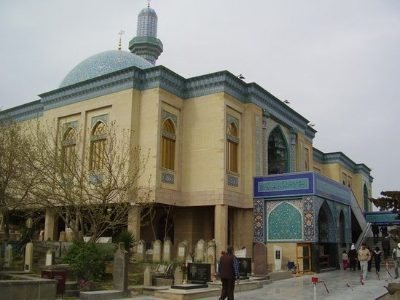
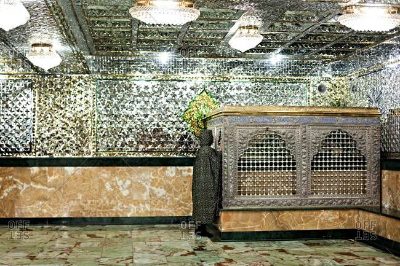
Mir Movsum Aga mosque This place, which currently serves as a temple complex, is in an area called "old cemetery" in Shuvalan town of Baku. At the center of the complex is the tomb of Mir Movsumzade, son of Mir Abutalib from AР ”РЎСџa Seyida. Aga Seyidali Mir Movsumzade, commonly known as "etaga", had a legendary reputation when he was alive, and was known for his trust, spiritual strength and kindness. Aga Seyidali Mir Movsumzade was born in 1883, lived in Icheri Sheher for many years, died in 1950 and was buried in Shuvalan. Despite the prohibitions of the Soviet regime at that time, the people buried him with a large crowd and always remembered. In 1992, a small mausoleum was built on the tomb of Mir Movsum Aga, and then a magnificent monument was erected there. Since it is located in the complex cemetery, there are almost no machines here and all the work was done manually. National Leader Heydar Aliyev visited this temple many times and met with locals and believers.
6 The Mosque of the Martyrs
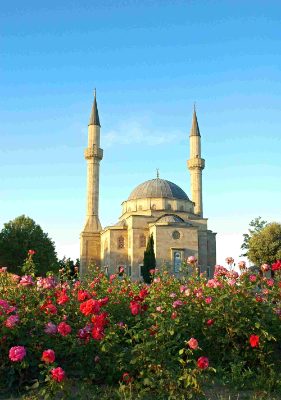
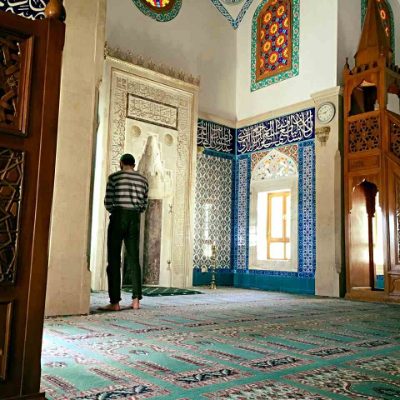
The Mosque of the Martyrs , also popularly known as the Turkish Mosque, is a mosque in Baku, Azerbaijan, near the Martyrs' Lane. The mosque was built in the beginning of the 1990s with assistance of the Turkish government. The mosque currently is used as an official residence of religious attaché of the Turkish embassy. The mosque has been under construction since 2009. The 154th ayah from Al-Baqara chapter of Quran is written on the façade of the mosque in Arabic and Turkish: “Do not say “Dead!” about those, who died for the sake of Allah. No, they are alive! But you do not feel.”
7 Murtuza Mukhtarov Mosque
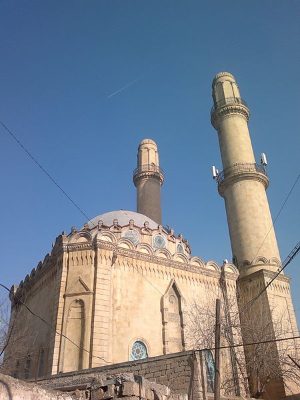
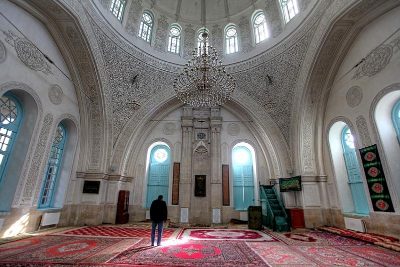
Murtuza Mukhtarov Mosque Construction of the mosque was initiated in 1901 by local residents. Due to material deficit, construction was suspended. The residents asked Murtuza Mukhtarov for financial aid. Mukhtarov hired several architects (including the main architect Ziver-bey Akhmedbekov) and took over the construction cost Construction lasted for 8 years and was completed in 1908. The mosque was used as a weaving workshop in the Soviet Union. Between 1985 and 1989, it was used as a hall for an exhibition of works of Sattar Bahlulzade. Since 1989, the building has functioned as a mosque. Mukhtarov gave a Quran with golden Arabic calligraphy to the mosque as a special gift. It weighs 25 kilograms. The mosque has two minarets that are 47 meters tall. Each has 140 steps. The mosque also has a prayer room for women. Murtuza Mukhtarov's grave is located in the courtyard of the mosque. There is an inscription reading: "Greeting to the prophets" on the right and left sides of the mosque which was engraved with Arabic letters.
8 Haji Javad mosque
.jpg)
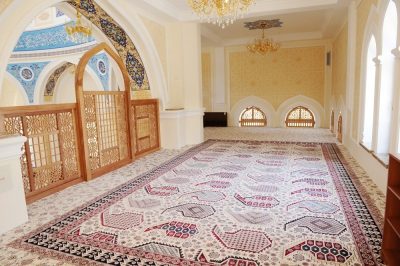
Haji Javad mosque is a mosque located in Baku, Azerbaijan in Jasamali area
History The previous building of mosque had three inscriptions which state that the building was built in 1305 according to the Muslim calendar. The initiator of mosque building was the merchant Haji Javad. The internal area was 12 m (39 ft) wide by 18 m (59 ft), with a height of 6 m (20 ft) from the floor to the ceiling and 9 m (30 ft) from the floor to the dome. The building also had a place for Islamic religion school-madrasa. During Soviet era mosque building was converted into the kindergarten and living areas. After the USSR, the collapsed mosque was repaired and opened for believers. In 2017, according to the presidential decree, the mosque was demolished. The new mosque building was planned to be built on Abbas Mirza Sharifzade Street New building The new building was completed on April 12, 2018. The total area of the mosque is 1,200 m2 (13,000 sq ft), 400 m2 (4,300 sq ft) of which is praying hall. Height was increased up to 18 m (59 ft) and minaret’s height is 33.7 m (111 ft). Walls are decorated with ornaments and verses with Quran
9 Taza Pir Mosque
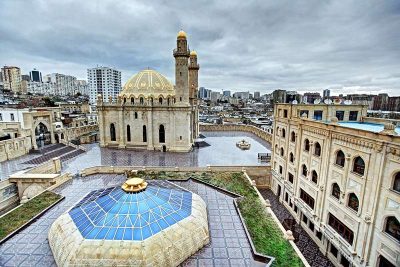
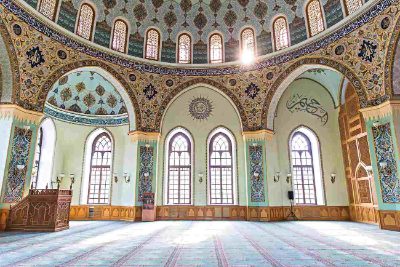
Taza Pir Mosque (also Teze Pir) is a mosque in Baku, Azerbaijan. Its construction began in 1905 and was finished by 1914. The idea for the mosque as well as its financing was provided by an Azeri philanthropist, a female, Nabat Khanum Ashurbeyov (Ashurbeyli)
History The history of the sanctuary dates back to the XIV and XV centuries. It existed first time as a tomb. The tomb belonged to Abu Seyid Abdulla who was a scholar and Islamic saint. The location of the sanctuary was known as “Xalfadam” until the middle of the last century. Over time, the tomb of Abu Seid Abdulla was exposed to destruction. However, the local population of Baku especially the Baku elites restored it several times. In 1817, son-in-law of Huseyngulu Khan, Qasim Bey financed restoration costs of the mosque. The actual construction of the temple began in the early 20th century. The construction of the mosque was started by construction foreman Karbalai Ahmed, and then completed under the direction of the architect Zivar bey Ahmadbay between 1905 and 1914 approximately 90 years later restoration of the tomb. The mosque was built on the tomb. The construction costs were met by Azerbaijani philanthropist Nabat Khanum Ashurbeyova. The construction of the Taza Pir Mosque took more than nine years due to financial and political issues of that time. Nabat khanim, who financed several charitable projects simultaneously in Baku, could not afford to complete the mosque. In addition, due to breakout of Balkan War in 1911, Tsarist Russia had strictly controlled the activities of banks in Baku, assuming that Muslim millionaires could help the Ottoman Empire so that the Baku millionaires had to get the approval of officials from the Tsarist Department for the amount to be spent on the construction of Taza Pir Mosque. Azerbaijani national industrial magnate and philanthropist Haji Zeynalabdin Taghiyev also actively attended in the construction process of the mosque. Only 3 years after opening the mosque was closed in connection with the October Revolution in 1917. Over the years the mosque functioned as a cinema and a barn, and since 1943 to present day - as a mosque. Akhund of the mosque is the Grand Mufti of the Caucasus Allahshukur Pashazadeh
Architecture The Taza Pir Mosque was the first religious building that white stone was used in its construction in Baku city at that time. Architect Zivar bey Ahmedbayov designed the interior of the mosque in accordance with architectural examples of the Muslim East. The Taza Pir Mosque was considered a completely new stage, not only in the urban structure of Baku but also in the religious buildings of Absheron, due to architectural features. The facade of the Taza Pir Mosque is composed of porticos and minarets that rise from the flanks. According to the project, a square-shaped worship hall (19.6x19.6m) is complemented by huge domes. In interior decorations, local architectural elements were used. Taza Pir Mosque has a large-sized worship hall of. There are examples of calligraphy from holy book Koran written inside and outside of the mosque, as well as on the minarets. Between 2006 and 2009 the mosque underwent construction work and the old and detrited parts were restored. After restoration processes, the mosque provided with a ventilation system and its floor covered Namazgah carpet in which 720 people can worship at the same time. Interior of the mosque has an area of 1400 square meters and decorated with ornaments of painting schools of Azerbaijan plus with samples from eastern ornaments. The height of the dome and a half meters. The mihrab and dome of the mosque made of marble, while decorative elements of the mosque, the tops of minarets and labels are made of gold. The dome, on which 6 times written La ilaha ilallah from Muslim proclamation of faith or Shahada, made from QР ”Р’±zР ”Р’±lqaya (Gyzylgaya) stone.
10 Heydar Mosque
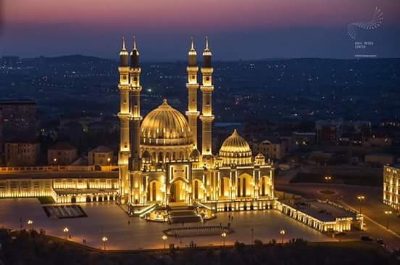
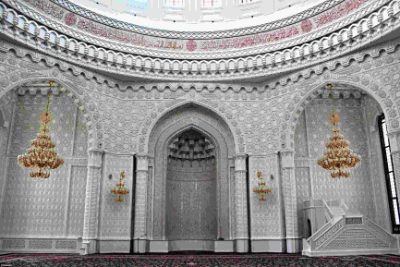
Heydar Mosque The opening ceremony of Heydar Mosque has been held on December 26, 2014. The mosque covers a total area of 12,000 square meters and internal area of the building covers a total area of 4,200 square meters. The façade of the building decorated with special stones based on the Shirvan - Absheron architectural style. It has four 95m-height minarets. It has 55m-height main and 35m-height second domes. Verses from Koran were written on the sides of domes. The Caucasian Muslim Office appointed Imam Hafiz Abbasov and Akhund Rufet Garayev for the Sunni and Shia sects, respectively. Mubariz Gurbanli, the Chairman to the State Committee on Religious Associations of the Republic of Azerbaijan said that Heydar Mosque is a separate complex. This building is attached to the Executive Power of Baku City and managed on the basis of relevant Regulations.
History The order to build the Heydar Mosque was given by Ilham Aliyev in mid-2012. Construction work began in September 2012 and was completed at the end of 2014. The official opening ceremony of the mosque took place on December 26, 2014, in which Ilham Aliyev, his spouse Mehriban Aliyeva, the Chairman of the Coordinating Council of the Muftis of the North Caucasus and the mufti of Karachay-Cherkessia Ismail Berdyev, the Head of the Baku and Azerbaijan Diocese of the Russian Orthodox Church - Father Alexander took part , Chairman of the Baku Religious Community of Mountain Jews Melih Evdaev, Plenipotentiary Representative of the Office of Muslims of the Caucasus in the Russian Federation Shafik Pshikhachev and chairman of the Caucasian Muslims Office Sheikh-ul-Islam Allahshukur Pashazade.
You can join our City tours where you can visit the mentioned mosques.

